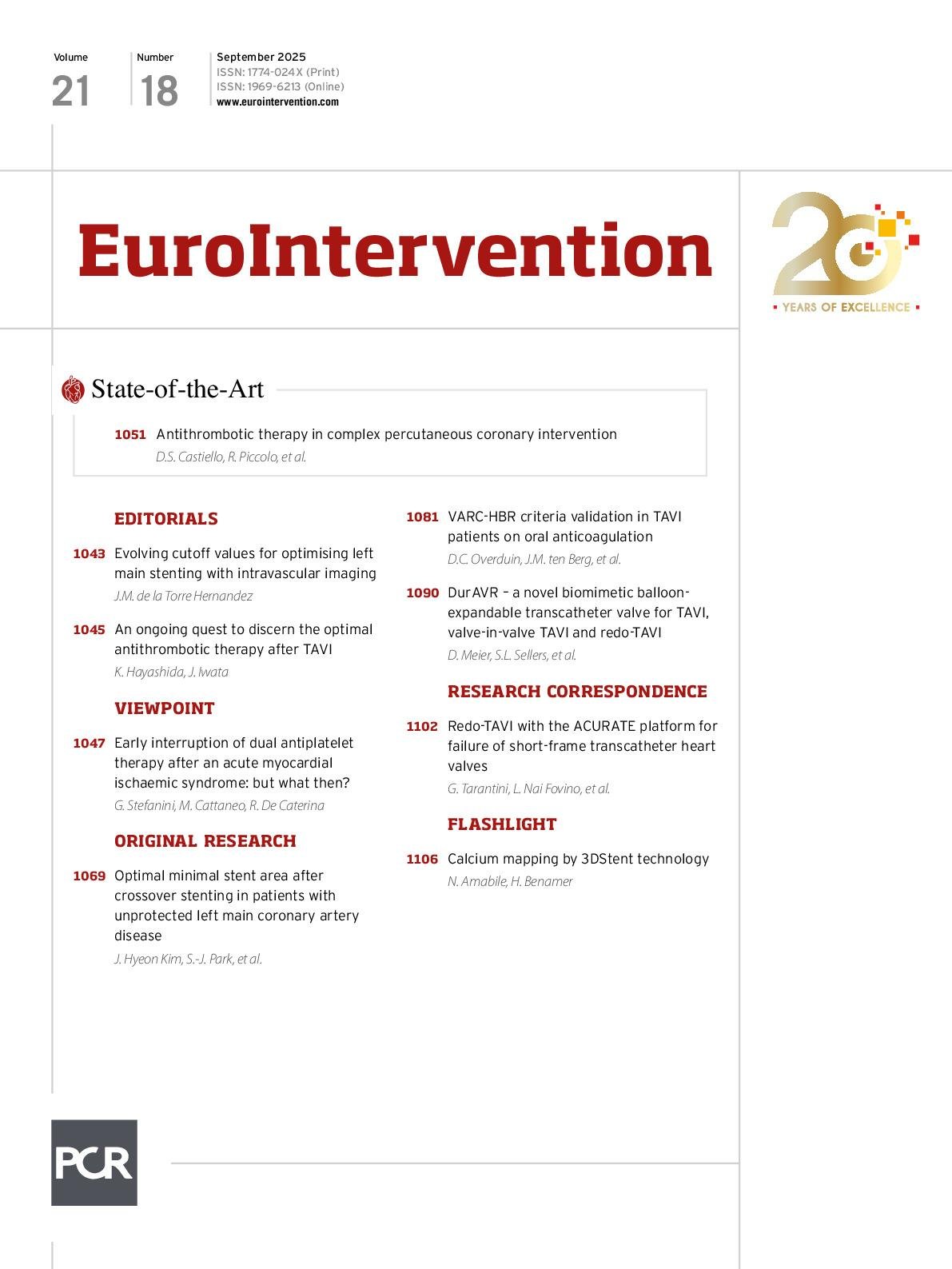Abstract
Background: Bleeding remains a frequent complication after transcatheter aortic valve implantation (TAVI). Recently, the Valve Academic Research Consortium High Bleeding Risk (VARC-HBR) criteria were introduced to identify patients at (very) high risk of bleeding.
Aims: This study aimed to evaluate the validity of the VARC-HBR criteria for predicting bleeding risk in TAVI patients and to compare its performance with other existing criteria.
Methods: Data were obtained from the POPular PAUSE TAVI trial, a randomised clinical trial that evaluated the safety and efficacy of continuation versus interruption of oral anticoagulation during TAVI. Major and minor bleeding risk criteria were identified at baseline, and bleeding events were recorded up to 30 days after TAVI. Patients were classified into three groups: those with ≤1 minor criterion (moderate risk), those with 1 major or 2 minor criteria (high risk), and those with ≥2 major or ≥3 minor criteria (very high risk).
Results: A total of 856 patients were included: 332 (39%) were classified at moderate bleeding risk, 337 (39%) at high bleeding risk, and 187 (22%) at very high bleeding risk. Major bleeding occurred in 4.2% of moderate-risk patients, 9.5% in the high-risk group, and 15.0% in the very high-risk group (p<0.001). Receiver operating characteristic analysis showed moderate discriminative performance (area under the curve=0.64, 95% confidence interval: 0.58-0.70). Despite higher-than-expected event rates, the VARC-HBR criteria demonstrated good calibration with observed outcomes.
Conclusions: The VARC-HBR criteria effectively identified distinct subgroups with a stepwise increase in major bleeding post-TAVI. However, their predictive performance for individual risk was moderate.
Sign up for free!
Join us for free and access thousands of articles from EuroIntervention, as well as presentations, videos, cases from PCRonline.com

